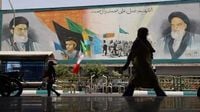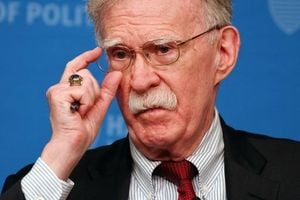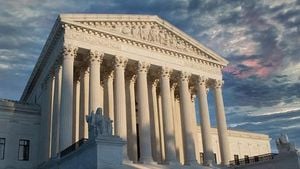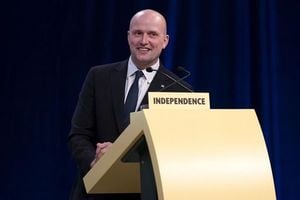Iran’s capital, Tehran, is running out of water—and time. On October 2, 2025, President Masoud Pezeshkian made a striking declaration: Iran is compelled to relocate its capital city, a move he insists is no longer a matter of choice, but one of survival. The announcement, delivered in a nationally televised address and reported by outlets including Tass and Iran International, marks a turning point in a debate that has simmered for decades but now feels inescapably urgent.
Tehran, home to an estimated 10 million residents, is facing a crisis on multiple fronts. The city’s water shortage is perhaps the most acute. Pezeshkian laid out the grim numbers: “Last year, rainfall was 140 millimeters, while the standard is 260 millimeters. That means rainfall has fallen by about 50 to 60 percent. This year, the situation is just as critical.” His warning was stark—without dramatic intervention, the capital could soon be unable to provide water for its people.
It’s not just rain that’s in short supply. According to Iran International, nineteen major dams across the country are operating at below 20 percent capacity, and the Amir Kabir reservoir outside Tehran is at just 6 percent of usable volume. The situation is dire enough that Pezeshkian told Supreme Leader Ayatollah Ali Khamenei, “We must shift the capital toward the Persian Gulf. Nowadays, we don’t have an alternative anymore. We are compelled to do so. If things remain the same, we will face difficulties.”
The water crisis isn’t limited to Tehran. Neighboring cities like Karaj and Qazvin are also suffering. The roots of the problem are deep and complex, involving not just drought but also resource mismanagement and overconsumption. Sheena Ansari, director of Iran’s Environmental Protection Organisation, confirmed that the country has been gripped by drought for the past five years. The Meteorological Organisation recorded a 40 percent drop in rainfall over the last four months compared to long-term averages. Meanwhile, Mohsen Ardakani, head of Tehran province’s water and wastewater company, revealed that 70 percent of Tehran residents consume more than the standard 130 liters of water per day—putting further strain on already depleted resources.
But water isn’t the only threat looming over Tehran. The city is also at serious risk from earthquakes. In November 2024, Pezeshkian revived the idea of moving the capital, citing not just water scarcity and overpopulation, but the fact that “60% of the city’s buildings do not comply with earthquake safety standards,” as reported by Turkey’s Anadolu Agency. The memory of Turkey’s devastating 2023 earthquake, which killed over 50,000 people, looms large in the Iranian psyche—a chilling reminder of what can happen when urban density meets poor regulation.
Economic concerns add another layer of complexity. In January 2025, Pezeshkian stressed that an “imbalance between resources and expenditures in Tehran” made its continued status as the nation’s capital unsustainable. He explained, “Transporting raw materials from the south to the center, processing them, and then returning them south for export drains our competitive capacity. We must shift the country’s economic and political center to the south and closer to the sea.” The vision is clear: a new capital on the shores of the Persian Gulf, offering direct access to open waters and the promise of revitalized trade and economic development.
However, the timing for such an ambitious project could hardly be worse. In late September 2025, the United Nations reimposed so-called “snapback” sanctions on Iran in response to its ongoing illicit nuclear development. The move, covered by Iran International, restores the global sanctions regime to what it was before the 2015 nuclear deal and comes after the International Atomic Energy Agency (IAEA) declared Iran in breach of international law. The IAEA’s chief, Rafael Grossi, told the agency’s board that Iran had “sanitized” critical nuclear sites, making it impossible for inspectors to accurately assess activities there.
The reimposed sanctions have already sparked political tension. Mohammad Baqer Qalibaf, Speaker of Iran’s Parliament, threatened a “reciprocal response” to any country that abides by the U.N. sanctions, though he stopped short of specifying what that might entail. Russia, for its part, has announced it will ignore the sanctions altogether. President Pezeshkian, for his part, struck a defiant tone, insisting that “the country’s goals, dignity, and pride must not be forgotten. We must move in a single row, toward one qibla, and under one leadership. This is the meaning of congregational prayer; unity. If this unity does not exist, that congregation will be only an empty shell.” He added pointedly, “Those who fear sanctions do not believe that one can continue the path by relying on God and the people.”
The idea of relocating the capital is not new. Iranian leaders have floated the possibility for decades, but the urgency has never been greater. Pezeshkian first began talking about it as a realistic project in November 2024, telling officials with an engineering firm tied to the Islamic Revolutionary Guard Corps, “Whatever we do, we’re just wasting time. We have no choice but to move the country’s economic and political center to the south, closer to the sea.”
Critics, both inside and outside Iran, have questioned whether such a massive undertaking is feasible given the country’s economic constraints and ongoing international isolation. But Pezeshkian has been adamant that the move is necessary to secure Iran’s future. “The problems the country is currently facing require us to direct the development path towards the Persian Gulf. Tehran, Karaj, and Qazvin are currently facing a water crisis, and this crisis cannot be easily solved,” he said, as reported by Iran International.
The new capital, if built, would mark a dramatic shift in Iran’s political and economic geography. Pezeshkian envisions a region “located on the shores of the Persian Gulf and provides direct access to open waters and the development of trade and economic relations. If we have a different view of the capacities of this region, we can create a very prosperous and advanced region. It is not good enough to accept the current situation and not design a scientific, accurate and indigenous map for the future,” he explained.
Yet, the challenges ahead are daunting. Building a new capital requires massive resources, careful planning, and—perhaps most importantly—national unity. Pezeshkian’s appeal for unity and faith in the face of adversity reflects both the gravity of the crisis and the resilience of the Iranian people. Whether the vision for a new capital becomes reality remains to be seen, but one thing is certain: Tehran’s days as the heart of Iran’s political life may be numbered, forced by the twin pressures of nature and geopolitics to yield to a new era.
As Iran stands at this crossroads, its leaders and citizens alike must grapple with hard choices and uncertain prospects, hoping that bold decisions today will secure a livable future for generations to come.




